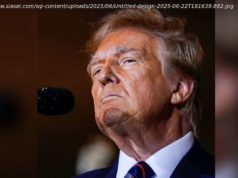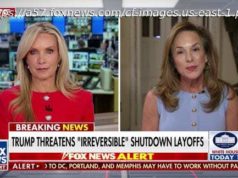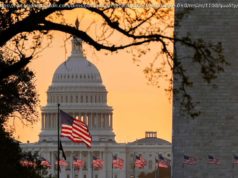Trump’s choice of the 64-year-old Powell will likely be seen as a safe choice who could represent continuity at the Fed.
WASHINGTON — President Donald Trump on Thursday nominated Federal Reserve board member Jerome Powell to be next chair of US central bank.
Powell will succeed Janet Yellen.
After a search that was more public than any before in the Fed’s more than a century of history, Trump’s choice of the 64-year-old Powell will likely be seen as a safe choice who could represent continuity at the Fed.
Trump had considered re-nominating Yellen, the first woman to lead the central bank, for a second four-term term. Her term will end in February. But in the end, he opted for Powell, a Republican, over Yellen, a Democrat, explaining last week that doing so would allow him to put his own mark on the Fed.
If confirmed by the Senate, Powell would be the first Fed leader in nearly four decades to lack an advanced degree in economics. He has served on the Fed board since 2012 after a career as an investment manager through which he amassed personal wealth in the tens of millions.
Trump had indicated that his final decision had come down to Powell, Yellen and John Taylor, a Stanford University economist. Earlier, the president had also considered Kevin Warsh, a former member of the Fed board, and Gary Cohn, his chief economic adviser.
Powell will likely be welcomed on Wall Street as someone who has supported the cautious stance toward interest rate hikes that Yellen has pursued in her nearly four years as chair and may be inclined to extend that approach if the economy performs as expected.
At the same time, no one is sure how closely Powell will hew to the Yellen model.
He is, for example, thought to be more skeptical than Yellen of the tighter regulations that were enacted after the 2008 financial crisis. And depending on how the economy fares, Powell might lean somewhat more aggressively toward interest rate hikes than Yellen did. How effectively he would lead the Fed’s response to an unexpected economic crisis is unknown as well.
In Powell, Trump chose a middle ground between sticking with Yellen, who had been chosen for the Fed job by President Barack Obama, and Taylor, who was critical of the Fed’s response to the 2008 financial crisis and would likely have pushed for raising rates more aggressively than Yellen’s Fed has.
Trump’s decision against nominating Yellen for a second four-year term makes her the first Fed leader since the end of World War II not to be offered a second term after completing a first. It would also break the pattern of the past three Fed chairs, who were first nominated by the president of one party and then re-nominated by the president of the opposing party.
On Wednesday, the Fed announced it was keeping its benchmark rate unchanged but hinted that it’s preparing to resume raising rates modestly in light of a consistently solid economy. In a statement after its latest policy meeting, the Fed left its key rate in a low range of 1 percent to 1.25 percent. It’s expected to raise rates for the third time this year when it next meets in December.
Though Powell would be the first Fed leader in nearly four decades to lack an advanced degree in economics, associates say he’s devoted much time since joining the board to schooling himself in monetary policy from the Fed’s stable of economists. He is well-liked inside the central bank and would be expected to bring a crucial ability to build consensus.
The Fed leader’s job is considered the government’s top economic policy post. The chairman has only one vote on the Fed’s committee of board members and regional bank presidents who set interest rates. But the chairman’s position is critical to achieving consensus.
The central bank’s power derives from its ability to raise and lower the federal funds rate, the benchmark that banks use to set consumer and business loans. If the Fed succeeds in managing rates, it can achieve its two policy goals — maximum employment and stable inflation. If it errs, it can inadvertently trigger high inflation or an economic downturn. Under Yellen, the unemployment rate has reached a 16-year low of 4.2 percent. But inflation has remained chronically below the Fed’s 2 percent target.
The seven-member board has three other vacancies, thereby providing Trump with additional ways to put his imprint on the central bank.






